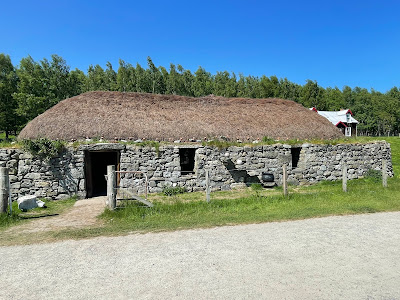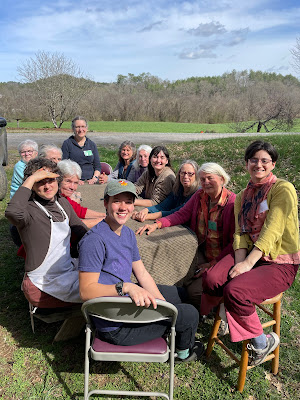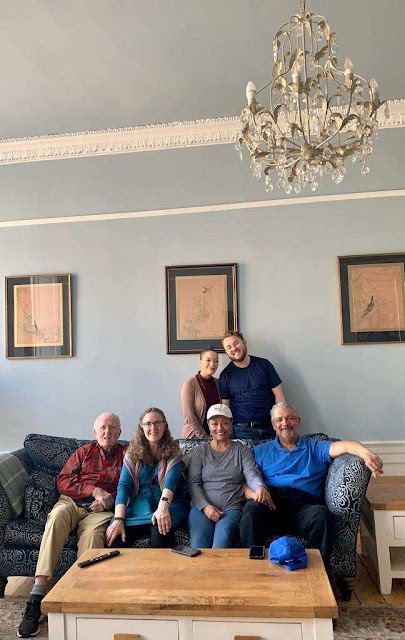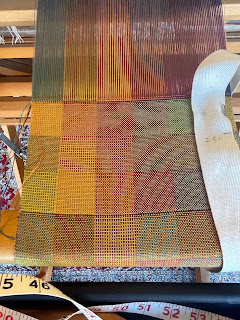I do not post very often to my blog, but I do try to keep my teaching calendar up to date here.
If you are interested in a remote program/slide lecture for your fiber guild meeting, that information is in the post for June 19, 2020.
I have had a lot of travel so far this year, and some delightful fiber events, so let's get caught up!
Interestingly, I have had quite a number of workshops and conferences cancelled this year, largely to lack of registration. I'm curious to know if this is a trend - if the economy is causing some weavers to hold back from signing up for classes, or if some folks are still avoiding in person events. But I have to say that the two weaving conferences I attended in June had very enthusiastic attendees who were delighted to finally be getting together to share their love of fiber!
In March, I joined my dear friend, Martha Owen at the John C Campbell Folk School to co-teach our Sing 'Til the Work's All Done class. We designed this class to highlight our best individual skills and share the fun with other fiber enthusiasts. It is a 5 day class that teaches worsted wool preparation and spinning for warp yarn, woolen prep and spinning for weft yarn, natural dyeing and various techniques of blending colored fiber, and basic weaving on a prepared floor loom (linsey woolsey cloth) as well as the option to plan and weave a rigid heddle project, all using handspun yarns.
In our March class, one of our students chose to work with the Swedish Band loom and wove a lovely band with her handspun!
We also had 3 scarves, a loom shaped bag, and lots of samples of linsey woolsey with handspun weft.
And a field trip to see Martha's Shetland sheep getting sheared.
We will continue to offer this class as long as there is enough interest; we have offered it once a year at the Folk School and it is on the schedule for August 2024. We also taught a 2.5 day version at MAFA called Worsted, Woolen, Woven.
In May, I got to attend a two terrific classes at the MD Sheep & Wool Festival and then volunteer once again for the Fleece Sale. I had not been to MD Sheep & Wool since 2019, and it was such a treat to see so many old friends and to assist one of the fleece judging teams this year. I took a Gotlands class with Deb Robson and a Marling class with Cecelia Campochiaro - both were excellent and inspiring!
 |
| Part of the Processional Frieze from the National Portrait Gallery |
 |
| Edinburgh sunset, looking down to the Firth of Forth |
 |
| The Sir Walter Scott monument in Edinburgh |
 |
| Welcome message in our hotel room in Glasgow |
 |
| We didn't get out much in Glasgow, but the 4th day we felt well enough to take a short walk along the Clyde |
 |
| A black house at the Highland Life Museum |
 |
| A beautiful Highland Coo at the Highland Folk Museum |
 |
| Tweed sample books, Highland Life Museum |
 |
| With some new friends in the St Andrew Square Garden |
 |
| Riding the Hop On Hop Off Bus around Edinburgh |
I chose the buttons from a booth at the MD Sheep & Wool Festival without a sample of the yarn to guide me, but they were a perfect color choice. I sewed the buttons onto the button band on Tuesday morning and then proudly wore it in the streets of Edinburgh and throughout our two week trip. We had no rain at all during our visit, and only one day that was too hot to wear my new cardigan.
OK - that's enough for this post! More travel adventures in the next one.





















































